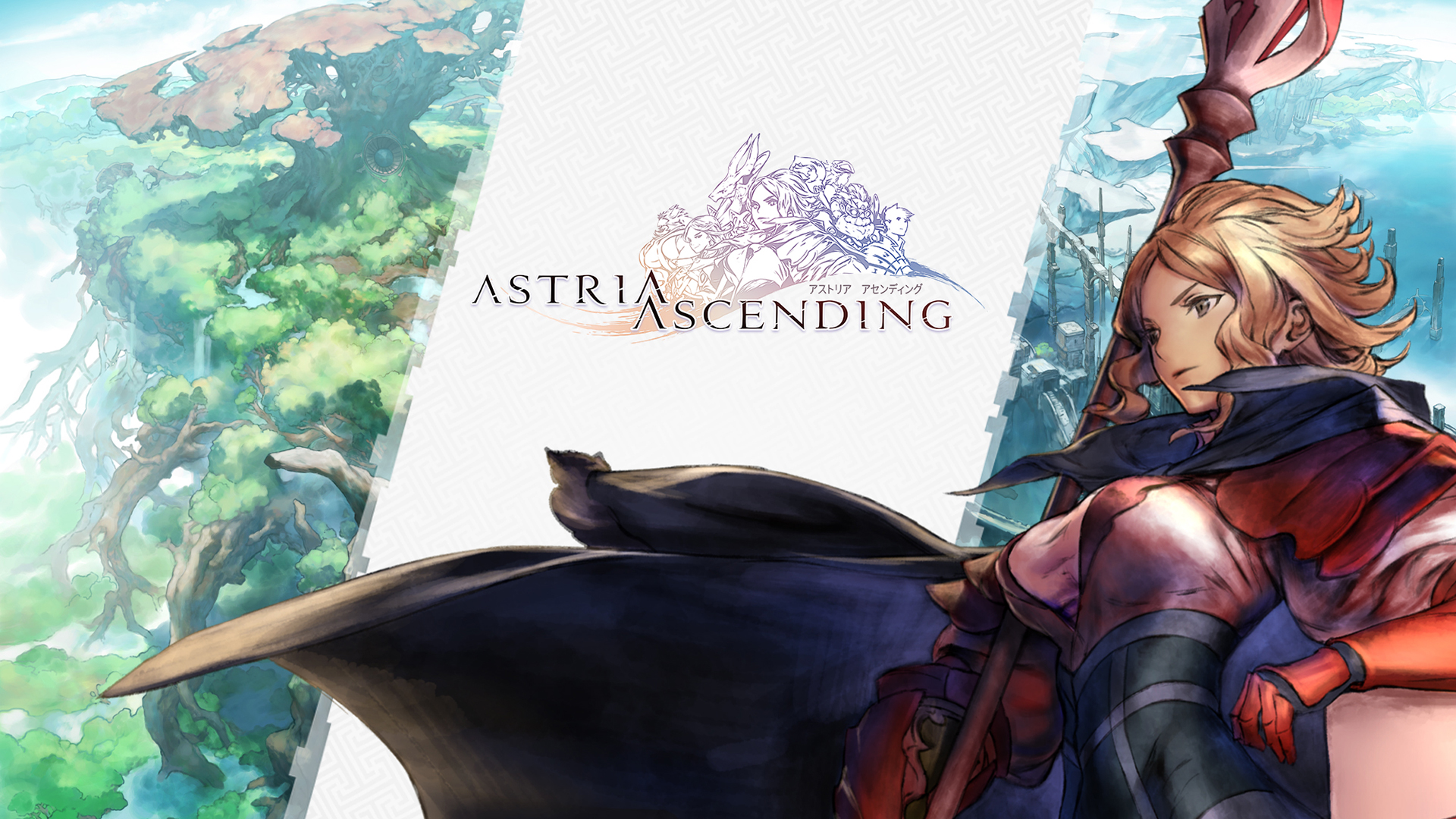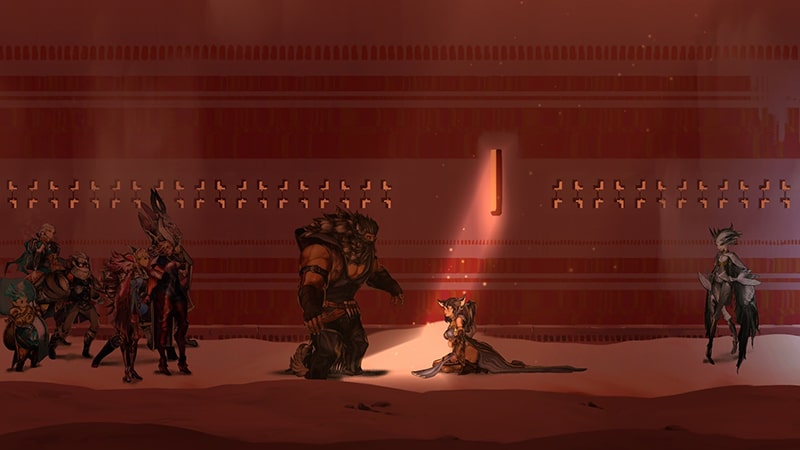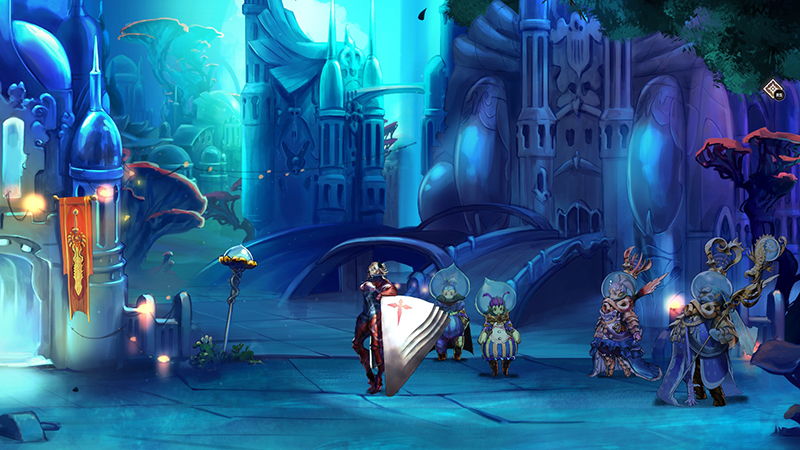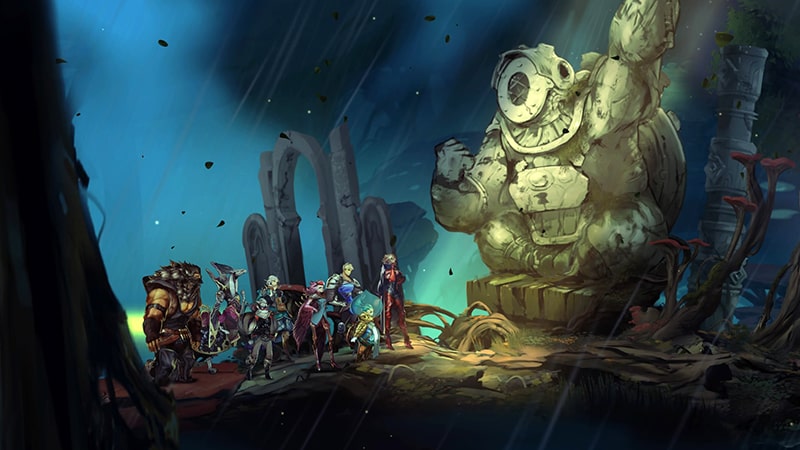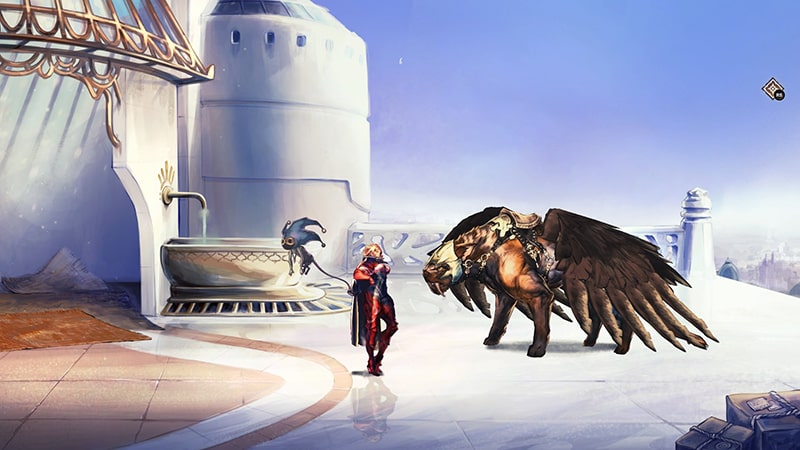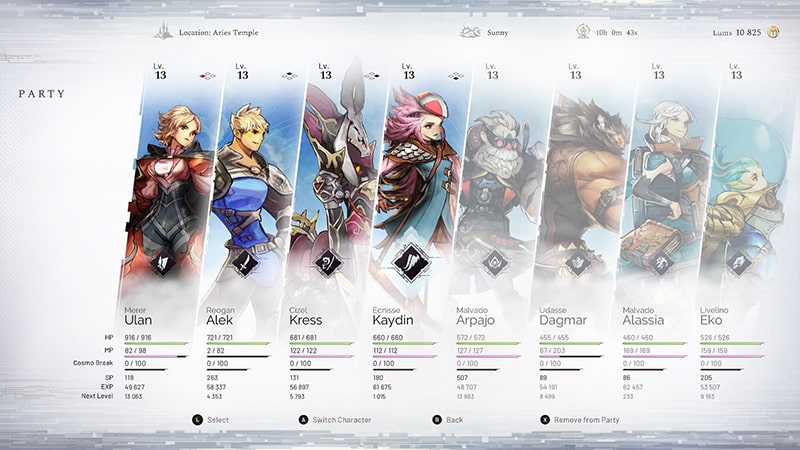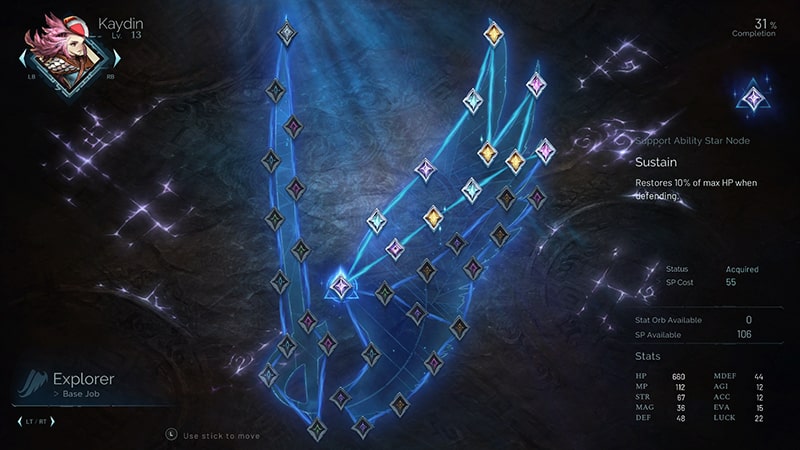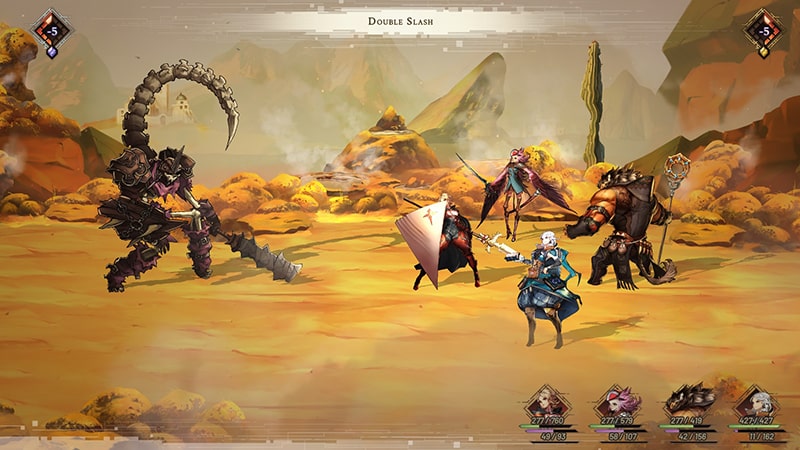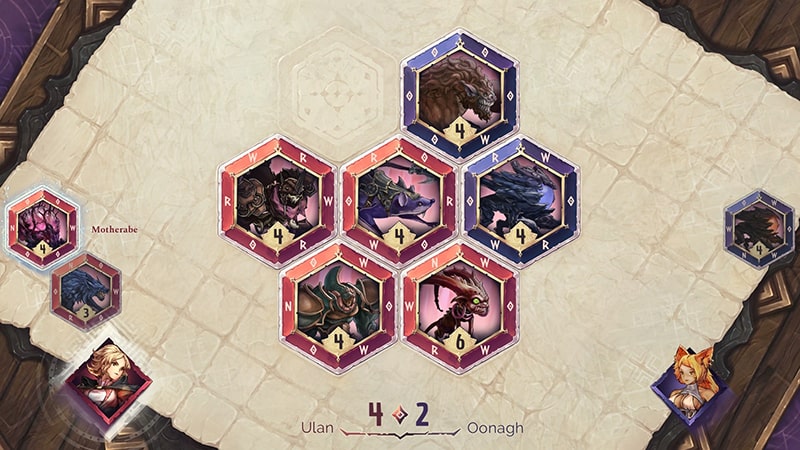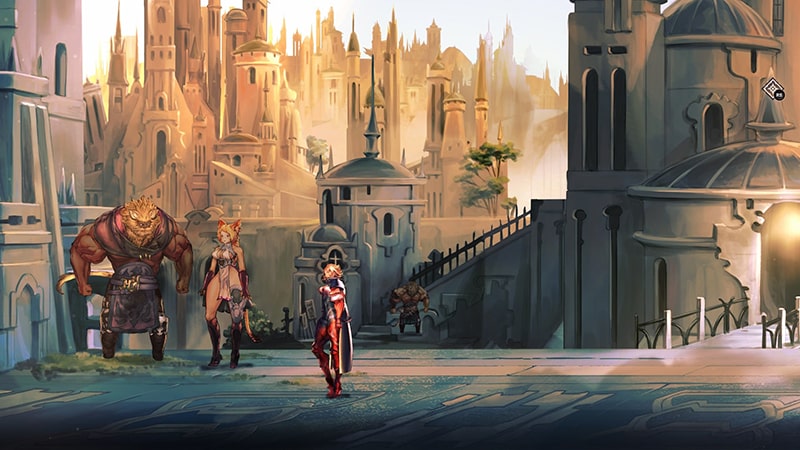Astria Ascending PS4 Review – Astria Ascending is a classic JRPG at heart. For those of you who enjoy exploring dungeons, grinding levels and customizing your characters, Astria Ascending is for you.
Astria Ascending is developed by Artisan Studios, with a team of less than 20 people, and what they managed to accomplish is impressive. That’s almost unsurprising though, considering some of the developers behind it like: Kazushige Nojima (game’s narrative), Hitoshi Sakimoto (soundtrack), Hideo Minaba (visuals) and Akihiko Yoshida (visuals).
Quick note, the majority of my playthrough was on PC via Steam. However, I was able to play the game on PS4 Pro before the embargo lifted, so the gameplay footage at the bottom was from my console playthrough. I didn’t see any noticeable differences between the platforms, other than loading times. Despite having a Crucial 1TB SSD installed in my PS4 Pro, load times were much slower than playing the game on my MSI GS75 Stealth laptop, which had no load time issues.
Astria Ascending PS4 Review – A Spellbinding Turn-Based JPRG With Unique Characters And Beautiful Art Direction
The Tale of Astria Ascending
Every three years, warriors from across the world are chosen and bestowed with zodiac powers to become demi-gods. They form a fighting force that battle the bringers of chaos and maintain harmony in Orcanon. Though, by obtaining the zodiac powers, their fates are sealed. After three years of service, they will move on from this world and the folklore passed down to children is that the demi-gods will go on to play in the stars.
From the outset, Astria Ascending differs from your usual JRPGs as it avoids the zero to hero narrative that saturates the genre. Instead, you are treated to a game that doesn’t shy away from exploring mature themes such as sacrifice and loss of loved ones.
While some of your heroes are proud to serve as the 333rd Demi-Gods, some champions like Eko and Dagmar seem to resent their duty. Eko being the youngest of the party at 13 years old and having just found love, with a girl named Marin. Whereas, Dagmar leaves behind his wife Kwan, with unspoken words between them.
I found the storyline to be interesting enough to keep me invested in the game. Each character is distinctive and learning about each of their origins through various chapters and missions kept the game entertaining throughout. While the beginning of the game feels slow due to a lot of exposition, things start to pick up in Chapter IV. You eventually find out that Noises aren’t your only worry.
The world of Orcanon is broken up into five main cities, each with various districts to visit. In addition, there are a total of 26 dungeons/temples to traverse with puzzles to solve, treasure to uncover and bosses to fight. Often times, you’ll find yourself revisiting dungeons to complete side-quests, go on hunts or just to level grind. As you progress through the game, you’ll unlock various new abilities for your Zodiac Ring too, which will help solve puzzles and open up previously unreachable areas.
You’ll travel the world in an effort to uncover who is summoning ghastly aberrations, known as Noises. Noises are destructive floating orbs that carry various monsters. These Noises are disrupting life for the various races who rely on the consumption of harmelons, a fruit that helps keep the peace.
Questing Can Be Cumbersome
One of my biggest critiques of the game is the questing system and map guidance, particularly in dungeons. Some quests will send you to areas not listed on the main map, like Uptown or Residential Area in Harmonia, which aren’t accessible for fast travel. Thus, until you’ve played the game for several hours and are familiar with the sub-districts, it’s often difficult to know where to go.
Dungeon and temple exploration is even worse. The map when traversing these areas is somewhat confusing and doesn’t give enough identifiers of where you are or where you want to go. It’s easy to get lost and backtrack if you’re not constantly checking the map, even when you can toggle map identifiers to show where hunts, bosses, chests and teleporters are located, but the dungeons can still be somewhat difficult to navigate.
Issues with the map then pile on issues with side quests, either due to the fact the location of the next quest point isn’t indicated on the map, or the task is limited in description. For example, there is a task in a side-quest that tells you to find an object hidden by Sherry, with no clue as to where in the entire game it might be hidden. Not all tasks in side quests are like this, but it’s just one example of limited description or bad navigation as it leaves you guessing.
The dungeons and temples are broken up into multiple sub-sections connected through doorways that are easy to miss or puzzles to unlock new areas aren’t explained enough to figure out. I found myself wandering the Pisces Temple for over an hour before I accidently jumped on a statue that triggered a hidden door to the Anun Prayer Room. It’s fair to say navigation overall could be improved.
Fast travel helps a lot, as you can jump to any city or dungeon and even sub-areas at anytime. At the beginning of the game, you only have access to the Harmonia Express train system to travel in-between cities, but in Chapter II, you gain access to a winged beast by the name of Fedorah.
You can use Fedorah to fly to any unlocked city, dungeon, or temple, including sub-areas you’ve unlocked via teleporters. Teleporters act as save points inside dungeons and temples, and when you discover a new teleporter, it allows you fast travel to that new point within the map. So it’s important to find these whenever you are exploring a new area.
The Demi-Gods
The captain of the pack is Ulan, a shield and lance wielding young woman. She is a versatile fighter who often acts as a support. She can scan enemies to find their weaknesses and resistances, heal allies, and act as a tank for taking damage. Other characters include; Alasia (Summoner), Eko (Scholar), Alex (Soldier), Arpajo (Thief), Dagmar (Sorcerer), Kaydin (Explorer) and Kress (Fencer).
I found early on that using Ulan to scan enemies to learn their weaknesses was helpful. That way you can adjust your party for the enemy types you might encounter in each dungeon or temple. Also, having Arpajo in your party early on allows you to steal items like potions, ether, and more from enemies so you don’t have to spend Lums for them at shops.
All characters earn XP & SP after battle encounters, so you don’t have to worry about interchanging them all the time. Additionally, you can swap characters during battles, so setting your core party isn’t as crucial as you might think. My core party for most of the early game usually consisted of Ulan, Alex, Kaydin and Kress. Although, using Arpajo can helpful if you need to steal items, or Dagmar if you need power omni-spells that can hit multiple enemies. As you unlock additional skills and job classes, it’s worth trying out different builds and party setups.
Each character uses a sprawling Ascension Tree to increase their stats and attain new spells. The skill tree uses stat orbs and SP you’ll earn after battles or find along your travels. While SP is earned individually for each character, you’ll have to use your stat orbs sparingly as they are shared across your whole party.
You’ll select a main job for each hero, but there are also sub jobs and support jobs for your characters. For example, Ulan can be a Harnesser, Black Mage or Guardian. Or with Kaydin you can select; Hunter, Assassin or Alchemist. Each sub job evolves your main job and plays off the Ascension Tree skills you unlock. Furthermore, each sub job will allow you to equip different weapons and armor for your characters depending on the build you want to go with.
When equipping your party, it’s important to make sure you use the best weapons, armor, helmets, shields and accessories. Certain accessories can provide additional strength or magic power, or can provide resistance against certain kinds of elemental magic and debuffs.
Combat Mechanics & Strategy
Veterans of classic JRPGs will feel right at home in Astria Ascending. Combat encounters will have heroes and enemies take turns attacking, casting buffs and debuffs, or magical spells against each other. Sometimes you can initiate a preemptive strike by striking the Noise prior to entering the battle, allowing your team to attack twice. If the Noises hit you from behind, the enemy will get a surprise attack allowing them to go ham on you. This is especially annoying if you’re facing enemies that can cast stuns, resulting in most of your party, if not all, being hit several times before you can take action.
As you progress through the game, each new dungeon or area will see a rise in difficulty, so be sure to grind a few levels before taking on a new area. Also, you are unable to pause the game during battle or access the main menu. Encounters like hunts or boss battles can be pretty grueling, so make sure you are well equipped before engaging them. One caveat I have with the combat is the lack of a turn bar indicating the order in which characters and enemies attack. It’s not a deal breaker by any means, but would be a nice improvement.
There are options to disable Noises from respawning in dungeons, disabling field encounters and toggling a weaknesses display so you can see enemy vulnerabilities without having to scan them. These three options are great if you’re wanting to quickly retrace your steps through a dungeon for a side-mission or are running out of MP. Also, if you’re in tight spot, you can change the game’s difficulty at any point during your playthrough.
The Focus Point System
The Focus Point system is an interesting addition to the traditional turn-based combat mechanics. You earn focus points by attacking enemies and using abilities that play to their weaknesses. You can use the right and left bumpers to adjust spending focus points on attacks and spells to increase their damage. In most ways, Focus Points are a damage multiplier.
In addition, if you’re Alasia, you can summon Astrae into battle. The Astrae will replace your team on the battlefield, acting as a momentary tank, unleashing powerful attacks for Focus Points. Outside of your starting Migmy Astrae, you will earn additional summons from beating bosses in various temples, like Anun in the Pisces Temple.
If you find a circumstance where a character in your party feels useless against certain enemy types, you can spend their turn adding additional focus points to your team. This function makes it so turns aren’t going to waste. I like the way this mechanic works. Depending on the enemies you are facing, you may just use one character from your party to attack. The rest of your team builds focus points or casts heals and ethers. Someone like Dagmar can unleash powerful omni-spells with a 4X multiplier from Focus Points, clearing the whole field of enemies.
J-Ster Mini-Game – Stack Your Deck
J-Ster is a collectible card mini game that can you can play against characters all across Orcanon. It’s a 7-slot hexagon grid like game, where each opponent selects five tokens from their collection and place them on the board in an effort to flip the most tokens. Be careful though, as some characters have preset rules for how the game is played. Token visibility and winner conditions are all preset with each character you face. Sometimes you may only lose one token, but if the rules are winner takes all, then you lose them all.
At the start, one token is randomly chosen from each players pool. One is placed on the grid and the other is discarded. The goal of J-Ster is to flip the majority of the tokens on the table. Higher value tokens generally win, but strategic placement and use of modifiers are important as well. Modifier applications include absorb, nullify and resist. I like how there is quite a bit of strategy involved. Collecting tokens and increasing the overall value of your deck is important, but placement and rotation of modifiers is key as well.
If you find yourself playing countless hours of J-Ster, you’ll want Arpajo in your party, as he can transform weak enemies you find in dungeons into tokens. Altogether, J-Ster is an entertaining mini-game that provides a lot of replay value.
Gorgeous Hand-Drawn Visuals
The visuals in Astria Ascending are reminiscent of Vanillaware games like Odin Sphere or Dragon’s Crown. Beautifully hand-drawn 2D character art and environments displayed in 4K resolution, with fantastic animation to match.
Cities are wildly varied, from Eko’s aquatic themed city of Vetira to Kaydin’s city of Awisis Woods. Dungeon biomes are also diverse, ranging from dark swamplands and sewers to blistering deserts. Add to the fact there is dynamic weather, including rain and sandstorms. The team at Artisan Studios did a wonderful job at breathing life into this fantasy world through its art direction.
The audio department is no slouch either. As previously mentioned, Hitoshi Sakimoto, known for his work on FFXII and Vagrant Story, composed the soundtrack for Astria Ascending. From engaging battle music to assorted melodies for each city and dungeon, I found the music to be delightful.
I recommend playing the game with Japanese voiceovers, with English subtitles. The English voiceovers for some of the NPC characters like the flying monkey Migmies are annoying. Plus, the Japanese voiceovers just sound better for this style of game. The main story arch is voiced, but most of your interactions outside of that are text-based.
Final Overview
Astria Ascending is a fantastic adventure for any JRPG fan. The game avoids the zero to hero theme that oversaturates many games in the genre nowadays and explores mature themes of predestined fate, loss of loved ones and more. I highly recommend that you inspect the Journal in the main menu throughout your journey, especially at the start of the game. You can find helpful tutorials including; character overviews, how to fast travel, mastering focus points, playing J-Ster, and traversing dungeons. It’ll help you get off to a great start.
In my opinion, the art direction is the highlight of the game. There are not many 2D games that look this impressive. Couple that with a solid turn-based combat system, unique characters and storytelling, Astria Ascending is worth the price of admission.
Astria Ascending releases on September 30, 2021 for PS4, PS5, Switch, Xbox One, Xbox Series X/S, and PC.
Review code kindly provided by PR.
